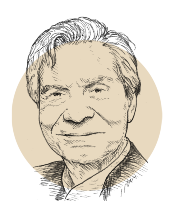This enthusiasm for the Storming of the Bastille is not shared by all French people – the Revolution, which was also a civil war, is not solely associated with good memories. The American sensibility goes back to the very origins of the joint history of our two peoples. When news of the French Revolution reached Philadelphia, with the six weeks’ delay usual in those days, the Founding Fathers and guiding spirits of the new American nation interpreted it as a response to America’s new freedom.
It is true that the same principles animated the revolutionary champions of liberty on both sides of the Atlantic, as well as the same authors: Jean-Jacques Rousseau, Voltaire, Montesquieu, and John Locke. According to George Washington and Thomas Jefferson, there was no doubt in 1789 that the spirit of Enlightenment was winning over the whole world, starting with Philadelphia and then carried to Paris and to London and Berlin. This transatlantic enthusiasm was to persuade Thomas Paine, the critically influential pamphleteer of American independence, to join the French cause and become deputy to the 1792 Convention. But Paine barely escaped the guillotine when the French Revolution turned its back on its original aspirations and descended into State Terror.
After the jubilation of the Bastille, American supporters of the French Revolution soon had to change their tune; they had wished for a constitutional monarchy in France, not the death of the king and a civil war. John Adams, Washington’s successor as president, deplored the fact that the French did not know how to lead “moderate revolutions.” The young American republic turned away from France as early as 1792, for economic as well as ideological reasons and renewed ties with Great Britain, their main customer. For this reason, Talleyrand, who lived in exile in Philadelphia before becoming Foreign Minister under Napoléon, came to regret France’s support for American independence: “These Americans,” he wrote in 1793, “are Englishmen after all.” This American antipathy for the consequences of the 1789 Revolution would turn into hatred against Napoleon, who betrayed all republican principles and destroyed maritime commerce.
Despite this disappointed love, Americans have remained faithful to the idealistic foundations of the revolution, if not to the revolution itself, hence Bastille Day with its street parties and dances in many American cities. And what do the French celebrate? Actually, no one knows. A century after the taking of the Bastille in 1789, the people’s representatives in Paris decided that July 14 was to be a national holiday. But which July 14, since there are two? The Storming of the Bastille in 1789, or the Fête de la Fédération in 1790? The latter was celebrated at the Champ de Mars, where the Eiffel Tower, built in 1889, stands today. For the 1790 event, Talleyrand, who was also a bishop, celebrated a mass in the company of Lafayette and King Louis XVI. Delegations came from all the provinces. France seemed to be reconciled, but, alas, not for long! A century later, the representatives quarreled interminably, the partisans of ’89, mainly from the left, and those of ’90, more from the right. The discussion ended without a resolution, and so the ambiguity remains: we still have July 14, but the year remains indeterminate.
This is not the worst outcome: Everyone is free personally to commemorate, according to his or her preferences, the revolution or the reconciliation. For Americans, things are simpler: Bastille Day celebrates a principle, as represented by the Statue of Liberty: The hope that the principles of freedom, as formulated in Philadelphia and in Paris, will become universal. There is still a lot of work to do, hopefully together.












